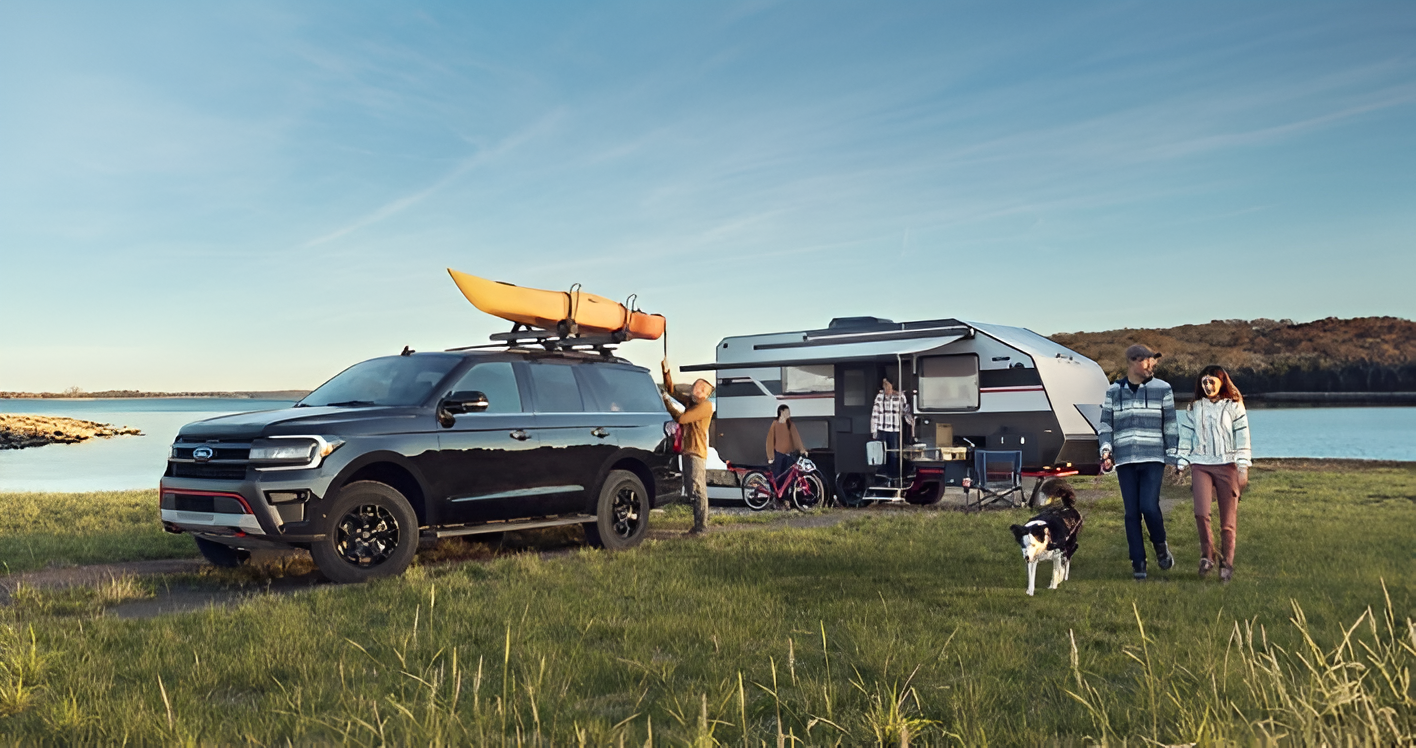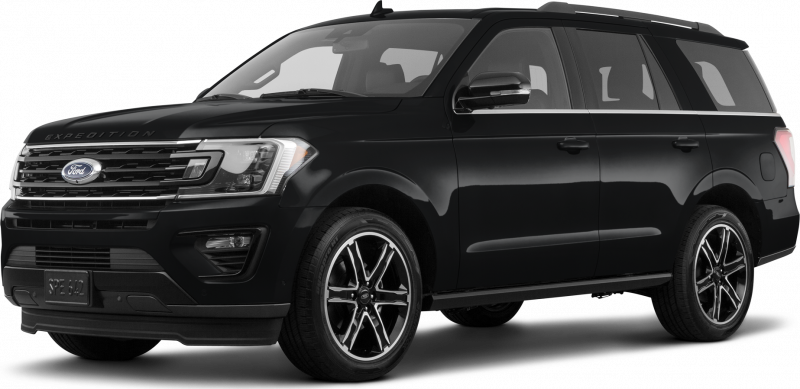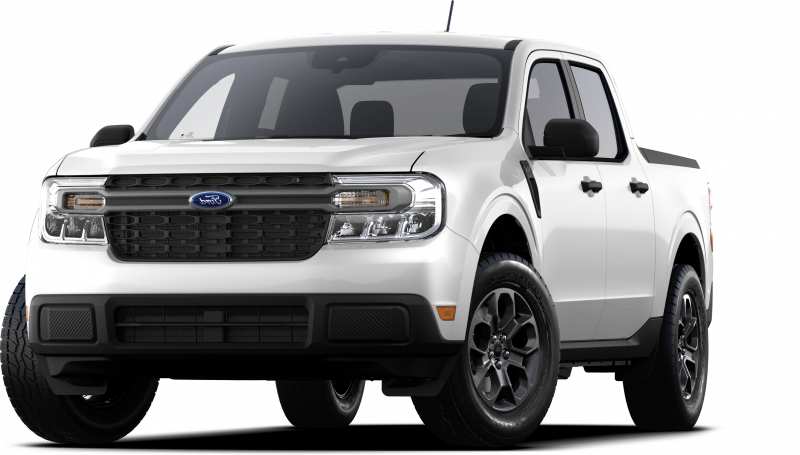Towing for the first time can feel a bit intimidating, especially when you're working with a truck and a heavy load. For Escondido drivers, whether you're hauling a trailer up to Palomar Mountain or towing a boat to Dixon Lake, getting the hang of towing is crucial for your safety and confidence on the road. Understanding the basics, like weight distribution, safe braking techniques, and managing turns with extra length behind you, will make a world of difference. Towing isn't just about hooking up and heading out; it requires a good grasp of your truck’s capabilities and a mindful approach to driving.
Safety Tips and Techniques for Towing with Your Truck for the First Time
Towing a trailer with a truck for the first time can be a daunting experience. Whether you're pulling a camper for a weekend getaway, a boat for some fun on the water, or a utility trailer for a project, the added weight and size behind your vehicle bring new challenges. First-time towing requires learning new skills, adjusting driving habits, and understanding the limitations of both your truck and your trailer. In this guide, we’ll walk through everything you need to know to tow safely with a truck, including essential safety tips and techniques for new drivers. These insights will help ensure that you can handle the road confidently and enjoy a smooth, trouble-free towing experience.
Preparing Your Truck and Trailer
Before you start towing, proper preparation is key. Your truck and trailer both need to be in good condition, and you must ensure that everything is properly connected. Skipping these steps can lead to dangerous situations on the road, such as trailer sway, brake failure, or even a disconnect. Understanding the capacities and limits of your truck is crucial for a safe towing experience.
The first step in safely towing with your truck is understanding its towing capacity. Each truck is designed to tow a certain maximum weight, and exceeding this capacity can strain your engine, transmission, and brakes, leading to mechanical failures. This information can typically be found in your truck’s owner’s manual or on a label inside the driver’s side door. The towing capacity refers to the maximum weight your truck can tow, including the weight of the trailer and its contents. It’s essential not to exceed this limit, as doing so can affect your ability to control the vehicle and stop safely. In addition to knowing your truck’s towing capacity, it’s also important to consider the Gross Combined Vehicle Weight Rating (GCVWR). This number includes the weight of your truck, trailer, passengers, cargo, and fuel. Make sure the combined weight of everything doesn’t exceed the GCVWR to ensure your truck can handle the load.
By staying within these limits, you’ll avoid putting unnecessary stress on your truck’s engine and transmission, which can lead to overheating or breakdowns.
Once you’ve confirmed that your truck can handle the load, the next step is to hitch the trailer properly. A secure connection is essential for safe towing. Start by ensuring that the trailer hitch is the right size for the trailer coupler and that it’s rated for the weight you’ll be towing. Most truck hitches have a specific weight rating, so it’s important to check that your hitch is compatible with your trailer.
The hitch ball should be snug in the coupler, and the latch should lock securely. Always use safety chains as a backup in case the hitch fails. Cross the chains under the coupler and attach them to the truck. This creates a cradle that can catch the tongue of the trailer if it comes loose, preventing it from hitting the ground. Another critical component is the breakaway cable, which engages the trailer’s brakes if it becomes disconnected from the truck. Make sure this cable is securely fastened to your truck, independent of the hitch and safety chains.
Once everything is hooked up, test the trailer lights. Your trailer’s brake lights, turn signals, and running lights must be functional so other drivers can see when you’re slowing down or turning. Driving without these lights working can be both dangerous and illegal, so never skip this step.
If you notice any issues with the lights, check the wiring connections or consider having them inspected by a professional before you hit the road.
Driving Techniques for Safe Towing
With your truck and trailer properly prepared, it’s time to hit the road. However, towing requires adjusting your driving style to account for the extra weight and length of the trailer. From braking to turning, every aspect of driving changes when you’re towing a trailer. First-time towers need to be particularly mindful of these changes to avoid accidents and ensure a safe journey.
One of the most important adjustments you’ll need to make when towing is reducing your speed. Driving with a trailer significantly increases the amount of time it takes to stop, so you should leave plenty of room between your truck and the vehicle in front of you. Slower speeds also give you more time to react to obstacles, curves, or changes in traffic. It’s recommended to stay under the posted speed limit, especially on highways, and maintain a safe distance from other vehicles. Keep in mind that the faster you drive, the harder it is to control your truck and trailer, and the more likely you are to experience trailer sway.
Braking also changes when you’re towing. The additional weight of the trailer means it takes much longer to stop, and slamming on the brakes could cause the trailer to jackknife or push your truck forward. Instead, brake gradually and apply pressure earlier than you normally would.
Many trailers come equipped with their own brake systems, which can help control stopping power, especially on downhill slopes. If your trailer has electric brakes, make sure the brake controller in your truck is properly adjusted to match the weight of the trailer. This device allows you to regulate how much braking force the trailer applies in relation to your truck’s brakes. Properly adjusted trailer brakes will prevent the trailer from pushing your truck during a stop and help keep both vehicles stable.
Taking turns while towing a trailer requires extra caution, as the trailer will track inside the turn and may clip curbs or other obstacles if you’re not careful. To prevent this, you’ll need to make wider turns than usual. When approaching a turn, move farther into the intersection before starting your turn, giving the trailer more room to follow behind. This is particularly important in tight spaces or on city streets, where curbs, parked cars, or other barriers could damage your trailer if you cut the turn too sharply. Always be aware of the extra length your truck has with a trailer attached. Check your mirrors frequently, as the trailer can take up more room in your lane than you might expect, especially during turns. If you have large side mirrors or towing mirrors, use them to monitor the trailer’s position and make sure it’s staying within your lane. These mirrors provide a wider field of view, which is essential when towing on narrow roads or through crowded areas.
Another technique that’s helpful for first-time towers is practicing turns in an empty parking lot before you head out onto the road. This gives you a chance to get used to the feel of towing and to practice making wider turns without the pressure of traffic. The more familiar you are with how the trailer behaves behind your truck, the more confident you’ll feel when navigating turns and corners on busy roads.
Preventing and Managing Trailer Sway
Trailer sway, or fishtailing, occurs when the trailer begins to oscillate back and forth behind the truck. This can happen when driving at high speeds, during strong winds, or when the trailer is improperly loaded. Sway is dangerous because it can cause the trailer to jackknife or even flip if not corrected quickly. Understanding how to prevent and manage trailer sway is essential for any first-time tower.
A common cause of trailer sway is improper weight distribution. The load in the trailer should be evenly distributed, with about 60% of the weight positioned toward the front of the trailer, over the axles. This helps to keep the trailer balanced and prevents the rear from becoming too light, which can cause it to sway. If the trailer is loaded too heavily in the back, the weight can lift the rear of the truck, reducing traction and control. On the other hand, too much weight in the front can overload the truck’s rear axle and affect steering.
Make sure the load is secured, and avoid placing too much weight on one side of the trailer, as this can also lead to instability. If your trailer has multiple axles, distribute the weight evenly over both axles to further reduce the risk of sway. Taking the time to properly load your trailer will make towing safer and smoother, reducing the likelihood of sway while driving at highway speeds.
If you notice trailer sway while driving, it’s important to remain calm and avoid overcorrecting. One of the worst things you can do is slam on the brakes or make sudden steering movements, as this can worsen the sway. Instead, gradually reduce your speed by taking your foot off the accelerator and gently applying the brakes. Keep the steering wheel straight and avoid sharp movements until the trailer stabilizes. If you’re towing a trailer with electric brakes, you can manually apply the trailer brakes using the brake controller. This helps to slow the trailer down independently of the truck, reducing the swaying motion and bringing the trailer back in line. Once the trailer has stabilized, continue driving at a lower speed to prevent further sway. It’s also a good idea to avoid passing large trucks or driving in high winds, as these conditions can exacerbate trailer sway.
Many modern trucks and trailers come equipped with sway control systems, which use sensors to detect and automatically correct trailer sway. If your truck or trailer has this feature, it can provide an added layer of protection when towing at high speeds or in challenging conditions. However, it’s still important to follow the basic principles of weight distribution and safe driving to minimize the risk of sway.
Parking, Backing Up, and Stopping on Hills
Parking and maneuvering a truck with a trailer attached can be one of the most challenging aspects of towing, especially for first-time towers. Backing up and stopping on hills require a good understanding of how the trailer responds to the truck’s movements. With practice and patience, these skills will become second nature, but it’s important to take your time and go slowly when learning.
Backing up a trailer is one of the trickiest tasks for new towers because the trailer moves in the opposite direction of the truck. To back up in a straight line, place your hand at the bottom of the steering wheel and move your hand in the direction you want the trailer to go. For example, if you want the trailer to move to the right, move your hand to the right, and if you want it to move to the left, move your hand to the left. This method simplifies the process and helps you stay oriented when reversing.
If you need to back the trailer into a specific spot, such as a parking space or driveway, take your time and make small adjustments to the steering wheel. It’s often helpful to have a spotter outside the vehicle who can guide you and provide feedback on how the trailer is aligned. Use your mirrors frequently to monitor the trailer’s position and be patient—backing up a trailer takes practice, and it’s okay to stop, pull forward, and try again if necessary.
Stopping and starting on hills is another challenge when towing a trailer. If you’re driving through hilly terrain, such as the areas around Escondido, you may need to stop on an incline. To prevent the trailer from rolling backward when you start moving again, use your truck’s parking brake or hill start assist feature, if available. This will hold the truck in place while you move your foot from the brake to the accelerator. Gradually apply the accelerator to get the truck and trailer moving smoothly, without jerking or lurching.
When parking on a hill, turn the truck’s wheels toward the curb and set the parking brake to prevent the trailer from rolling. If the incline is steep, consider placing wheel chocks behind the trailer’s tires for added security. This ensures that the trailer remains stationary while parked, even on uneven ground.
Tow Safely with a Reliable Truck from Aaron Ford of Escondido
Once you’re comfortable with these towing techniques, hauling with your truck can open up a whole new world of possibilities. The more you practice and follow the right safety tips, the more confident you'll feel towing anything from trailers to campers. So, take your time, learn the ropes, and soon you'll be ready to tow safely on every adventure Escondido and beyond has to offer.
At Aaron Ford of Escondido, we offer a range of trucks designed to handle any load. Whether you're towing up to Palomar Mountain or down to Dixon Lake, having a reliable truck makes all the difference. Explore our New Inventory to find the perfect vehicle for your towing needs, or check out our Pre-Owned Inventory for a dependable, budget-friendly option.
We also have Monthly Special Offers that can help make your purchase even more affordable. If you're curious about different models, visit our Model Showroom to explore options in person. And if your current truck needs a tune-up before hitting the road, Schedule a Service with our expert technicians. When you're ready, Apply for Financing and Value your Trade-In to upgrade to the perfect towing vehicle today.


























